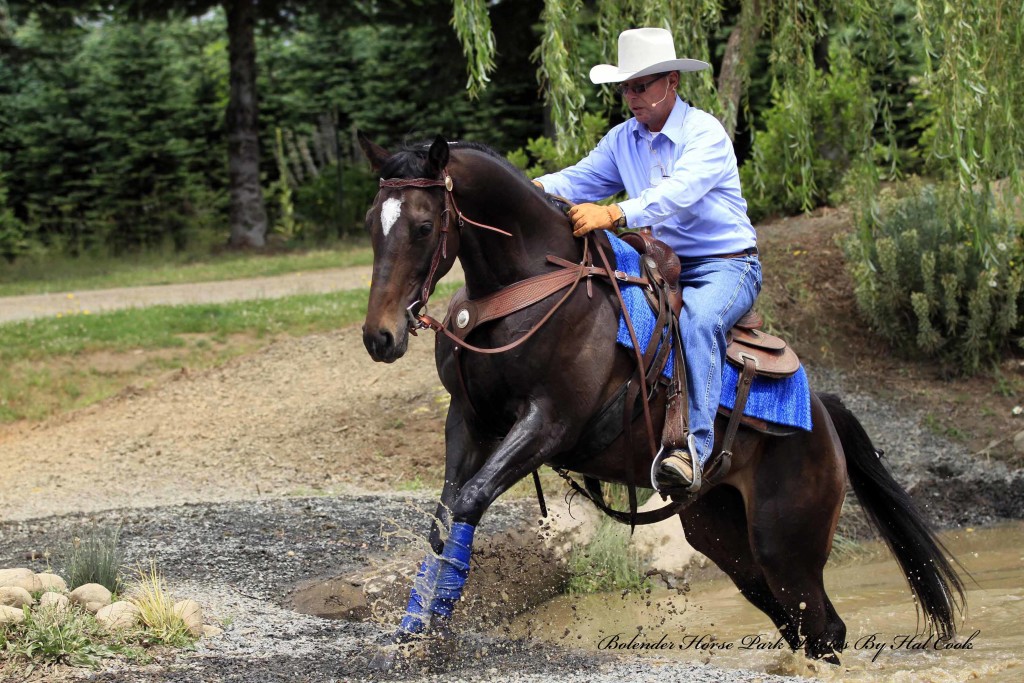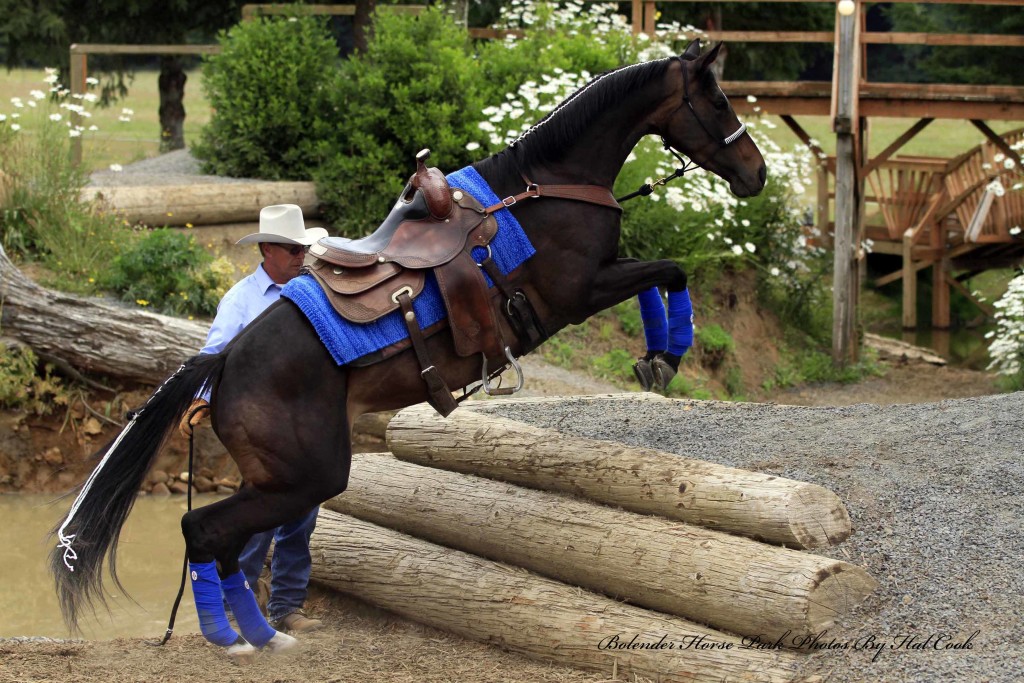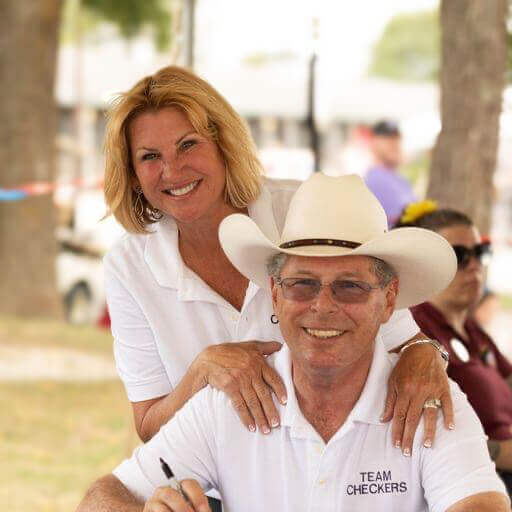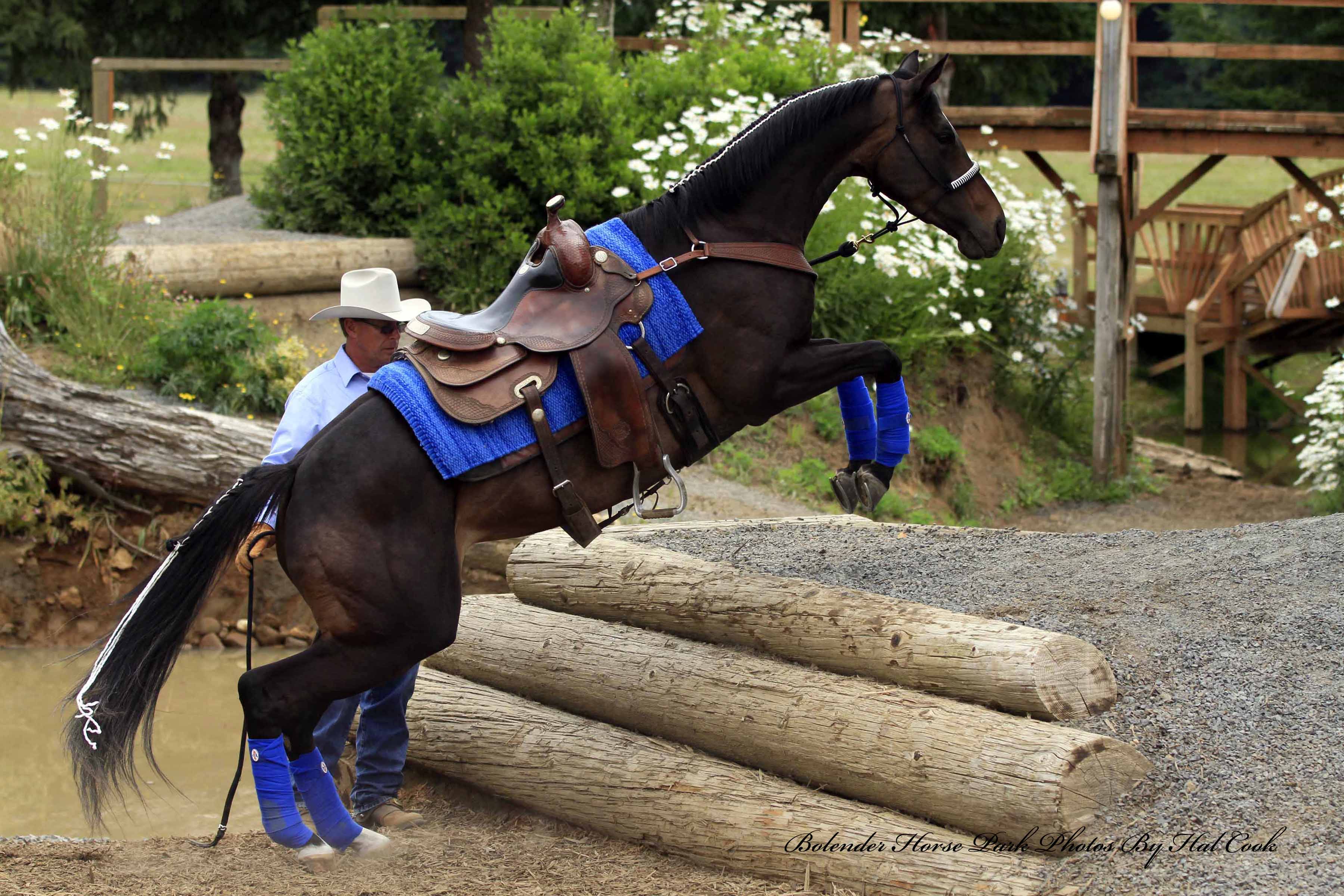Begin on the Ground to Safely Jump from the Saddle
by Mark Bolender

Recently, while riding near Mount St. Helens in WA State, the trail came up to a washout. In order to continue on without a lengthy back track, I needed to get my horse to jump up onto a trail located 4 feet above us. After checking things out to make sure that it was safe, I asked my horse to go for it. I was comfortable the jump was well within his ability. Happily, we accomplished the task without a problem.
To understand why I was confident that my horse could complete the task of jumping up this 4 foot obstacle safely and boldly, one must understand his prior training which began with the goal of building a bold and confident horse. In the process, it was necessary to teach him how to navigate and master all the trail obstacles without a rider. This included teaching how to make 3, 4, and 5 foot jump-up’s in a controlled, safe environment. Learning the jump-up is an advanced skill so I always make sure the horse has mastered some basic skills and has been well prepared to think a problem through. That way, it’s more willing to tackle and learn a new, harder skill. Thus, before I start teaching the jump-up, the basic skills I want the horse to master are rock and log obstacle navigation. It must also be able to navigate small step-ups and step-downs with and without a saddle. The following are the basic training steps I use to ensure success for navigating jump-ups.

I start by asking the horse to walk up a 12 inch step, followed by an 18 inch step. The horse should be able to walk with a steady cadence without any jumping before I ask it to jump. The reason for this is I do not want the horse to jump up and accelerate its speed when I’m riding. I find that if I back up and slow the horse down by having it first walk the small steps, it leads to the correct bold and confident jump later on.
When the horse is content to walk up at least 18 inches, then ask it to walk up to a 24 inch step. The majority of horses will hop up on this one. I always stop the horse as soon as it hops up and let it wait for at least a minute. This teaches it to wait for the rider and also to be quiet while waiting. The last thing you want is a horse that jumps and runs or, worse, jumps and bucks. I always teach this first without a saddle and from the ground. When I’m satisfied, then I will add the saddle and do it again before I ever actually ride the horse on the jump.
Now that the horse is jumping up at least 24 inches in a nice, relaxed manner I ask for a 3 foot jump-up. At this point all the horse needs is to roll back and collect itself in order to make the jump. If the horse has been properly prepared this won’t be a problem. The jump from 3 foot to 4 foot seems to be a big mental block for some horses but with a quiet focus and a belief in your horse you’ll be surprised at how many horses give it a try on the second or third request.
I have had very few horses that have had a problem going from 4 foot to 5 foot. However, I only ask about a third of the horses I train to add the extra foot to the jump. When the horse is very comfortable in jumping while on the ground then it’s time to mount up and ride. I back up and start all over just like I did on the ground. A word of warning to the rider who is riding in a western saddle: make sure that you grab the saddle horn so when the horse jumps up the saddle horn does not hook your clothes.
If you are not comfortable riding while asking the horse to jump during training or out on the trail, then just ask it to jump from the ground. If you do this on the trail you will need to train the horse with a longer lead rope so when it jumps up you will not be on the end of your rope.
Happy Trails and Bolender Blessings!
Published in April 2014 Issue

Mark and Lee Bolender own and operate Bolender Horse Park in Washington State, which houses the finest Mountain Trail course in the world. They are the founders of the International Mountain Trail Challenge Association (IMTCA) and travel worldwide as clinicians and ambassadors of Mountain Trail. Bolender Horse Park offers riders of all skill levels and disciplines a fun and challenging trail riding adventure.
Mark has designed and built Mountain Trail courses in the USA, Canada, Australia, and Europe—with many more in development. Mark uses his artistic, landscaping, horse training, and construction skills to build these courses (NW Steel Design LLC www.nwsteeldesign.com).
Mark is the author of Bolender’s Guide to Mastering Mountain and Extreme Trail Riding. Visit www.bolenderhorsepark.com to learn more.






